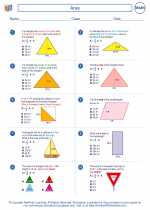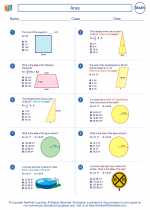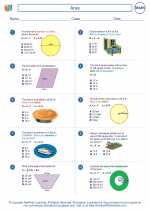Hexagonal Prism
A hexagonal prism is a three-dimensional shape that has two hexagonal faces and six rectangular faces. The hexagonal faces are the bases of the prism, and the rectangular faces connect the corresponding sides of the two hexagons. The hexagonal prism gets its name from the fact that it has a hexagonal base.
Properties of a Hexagonal Prism:
- It has 8 faces - 2 hexagonal faces and 6 rectangular faces.
- It has 12 edges.
- It has 6 vertices.
- The opposite faces are parallel and congruent.
- The lateral edges are all the same length.
Formulas for a Hexagonal Prism:
Surface Area (SA) = 2 * Base Area (B) + Perimeter of Base (P) * Height (h)
Volume (V) = Base Area (B) * Height (h)
Example Problem:
Find the surface area and volume of a hexagonal prism with a base edge length of 5 units and a height of 8 units.
Solution:
First, we need to calculate the base area (B) and the perimeter of the base (P):
B = 3√3/2 * (5)^2 ≈ 64.95 square units
P = 6 * 5 = 30 unitsNow, we can find the surface area and volume:
SA = 2 * 64.95 + 30 * 8 = 129.9 + 240 = 369.9 square units
V = 64.95 * 8 = 519.6 cubic units
Study Guide:
- Understand the definition and properties of a hexagonal prism.
- Learn the formulas for surface area and volume of a hexagonal prism.
- Practice solving problems involving the surface area and volume of a hexagonal prism.
- Identify real-life objects that have the shape of a hexagonal prism.
- Review how to calculate the area of a hexagon and the perimeter of a hexagon, as these are used in the formulas for the hexagonal prism.




